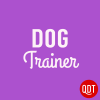How to Get Your Dog to Stop Barking at Guests
Learn what to do if your dog barks endlessly at guests.
Some dogs bark at the doorbell; some dogs bark at visitors; and some dogs bark at both. I talked about doorbell mania in an earlier article; this week, I’ll discuss how to help dogs who bark endlessly when visitors come in, then bark when the visitor gets up again, or laughs loudly, or comes back into the room after going out.
Buy Now

How to Get Your Dog to Stop Barking at Guests
The kind of barking I describe at the start of this article–it goes on for a long time, and it starts up again whenever the visitor moves around–teeters on the edge of aggression and sometimes falls right in. If your dog never quite relaxes while someone’s visiting, or if her barks are mixed with growls, or if she advances and retreats to and from the visitor, or if she ever snaps, nips, or outright bites, the tips I offer may be a good start but you should also get competent professional help. The same goes if people never quite seem to become familiar to her–if the same person can come over a half-dozen times but she always responds with as much agitation as if this were the first time she’d ever seen him.
Take a Walk with Your Guest
A great tactic for many dogs who are uneasy with people entering the house is to meet the visitor outside, even take a short walk together–to the end of the block and back is usually enough. Then send your visitor into your house ahead of you and give her a couple of minutes to get settled. Now bring your dog in.
Many dogs seem to feel more threatened when a visitor enters their space than they do if they enter to find the visitor already there.
Many dogs seem to feel more threatened when a visitor enters their space than they do if they enter to find the visitor already there. We tend to ascribe their response to territoriality, but I think it might also connect with anxiety about being stuck in an enclosed space while a potential threat approaches. Whatever the reason, for some percentage of dogs who are leery of visitors, the outdoor meeting plus having the visitor go inside first is enough to settle their nerves and help them relax. That also works wonders for friendly but extremely excitable dogs, by the way.
Check Your Dog’s Body Language
Okay, your visitor and your dog are both inside. Now check out your dog’s body language. Is he holding his body loose and comfortable, or is he still tense? Is he approaching your visitor with squinty eyes, a softly open mouth, and easy wags or fast butt wiggles? Or is he pacing at a distance? Has he lain down, but facing your guest head-on and vigilant? Did he start to bark when your visitor said hi?
How Should Guests Act Around Shy Dogs?
If your dog’s showing some friendly interest but isn’t quite relaxed, your guest should completely ignore her. Kind humans tend to respond to anxious dogs by trying to engage them and make friends; unfortunately, anxious dogs usually respond to that form of attention by getting more anxious still. Left to herself, a slightly shy dog may eventually check out your guest with soft, friendly body language; at that point, the guest might feed her a treat or offer a little scritch under the chin. No looming over the shy dog, please, and no grabbing her or following her if she retreats.
You should also manage the situation for everyone’s comfort and safety if your dog is still acting overtly tense. Some dogs do best when crated in another room.
Should You Put Your Dog in a Crate When Guests Come Over?
Most of us like to have our dogs near us; otherwise we wouldn’t have dogs. To crate your dog in another room may feel like excluding or even exiling him.
Let me encourage you to rethink the situation from your dog’s point of view. If he’s in the living room or wherever with an unfamiliar guest, he’s tense and on guard, ever ready to spring into barking action when the worrisome invader-type person makes a move. What he’s not is relaxed and enjoying the time spent hanging with his humans.
On the other hand, you have of course taught him that his crate is a comfy refuge where delectably stuffed chew toys are commonly had. So your dog has two scenarios available: tense vigilance, or quiet time with the canine equivalent of an Xbox. If that’s not quite enough to reframe the picture for you, try this: Unless you live in a mansion and your dog’s crate is half a mile from the living room, he will be well aware of the visitor’s presence. The difference is that instead of practicing tense, reactive behavior when you have guests, he’ll be practicing the much more desirable behavior of lying down absorbed in his chew. In short, you’re taking baby steps to change your dog’s response to having guests. Honestly, the visit will be pleasanter for you, too, if you don’t have to worry about how your dog is going to act.
Give Your Dog a Well-Paid Job to Do While Guests Move Around
Another possibility is to give your dog a job. This coping method has a few prerequisites. Your dog needs a solid reward-based grounding in at least a couple of behaviors–a sit, a down, targeting to your hand. Walking politely on leash will work, if the room you’re in is big enough. Tricks are fine too. By “a solid grounding,” I mean that she has to know these behaviors well enough to perform them even when she’s a bit anxious and distracted. As for you, you need to be on and clearly focused, and you also need your guest’s cooperation.
Suppose your dog will pretty much settle down as long as your guest also stays put, but will default to a barkfest as soon as he stands up. Ask your guest to give you a few seconds’ notice before he stands–your window of opportunity to put your dog to work. Cue her to perform one of her well-known behaviors, and deliver a tiny, tasty food reward. Now keep it up as your guest does whatever he needs to do. If you cued a down-stay, reward it generously, over and over. Or have your dog do a series of tricks, one after another after another, giving your dog one or more food rewards each time. The important thing is that your dog know these behaviors really well, so that she can respond to your cue in these less than optimal circumstances. Also, use behaviors that keep her focused on you and that aren’t too exciting – you’re trying to guide her toward calm and away from agitation.
Reward Your Dog Remotely to Keep Her Calm
A related idea is to use a remote-controlled treat dispenser, the Manners Minder, to teach your dog to go to a comfy bed on cue and stay there. Once your dog has thoroughly learned the system, you don’t need to stick close to her while your guest moves around–instead, you deliver her rewards from a distance.
What to Do If Your Dog Growls at Guests
If your dog growls at guests, snaps at them, or has ever actually bitten a guest, you’ll need to take additional precautions for safety’s sake, and to talk with a knowledgeable professional about a program of behavior modification. But if your dog acts a bit edgy and agitated around guests, without aggressing toward them, these tips and tricks may help you make big changes. Be careful not to overtax her; in general, the more visitors there are, the more of them are strangers, and the bigger and louder they are, the more worried your dog will probably be. It’s better to have a string of quiet successes with just a guest or two at a time than to throw your dog into situations she can’t handle with ease.
Send your questions and comments to dogtrainer@quickanddirtytips.com, and I may use them in a future article. I Twitter as Dogalini, and you can also find me on Facebook, where I post links to articles and videos and respond to your questions. Thanks for reading!
Image courtesy of Shutterstock


